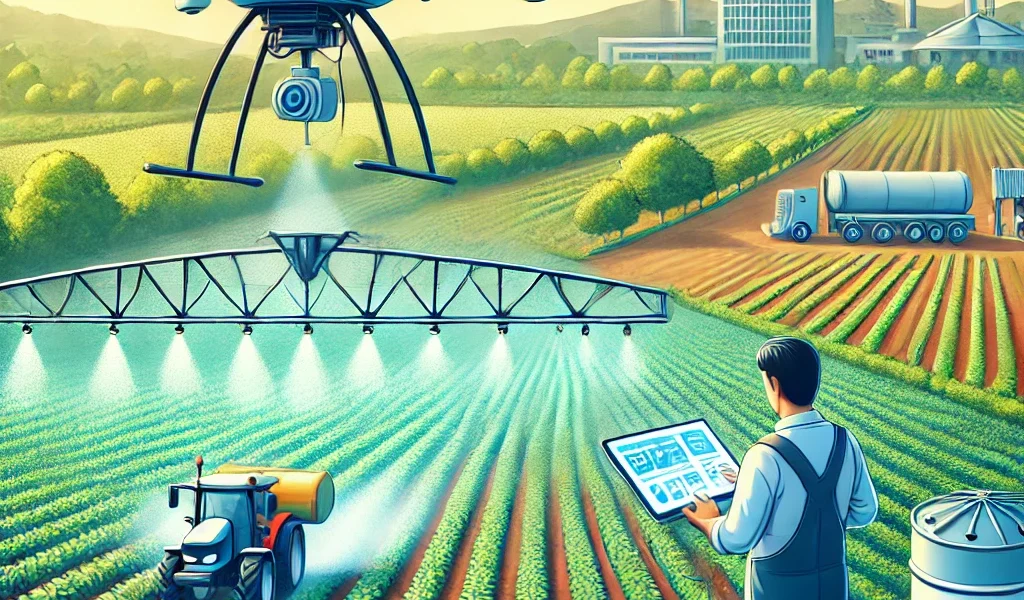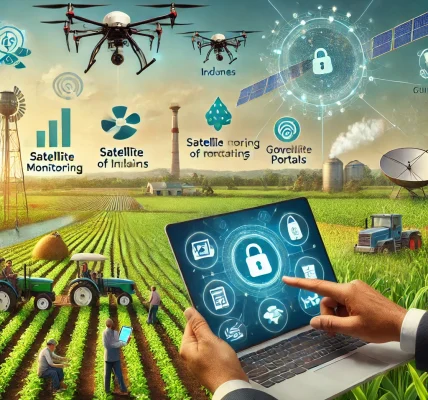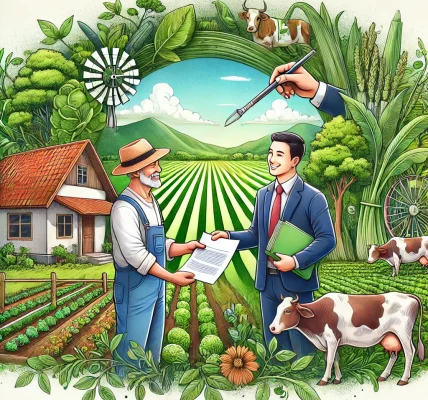Introduction
Drone technology is revolutionizing the agricultural sector by offering precision farming solutions that enhance efficiency, reduce costs, and increase productivity. With growing concerns about food security, climate change, and resource management, drones have emerged as a game-changing innovation. Recognizing this, governments worldwide, including India, are introducing subsidies and regulations to encourage drone adoption in farming.
This guide explores the benefits of drone technology in agriculture, available government subsidies, and regulatory frameworks to help farmers leverage this modern tool effectively.
Benefits of Drone Technology in Agriculture
Drones, also known as Unmanned Aerial Vehicles (UAVs), provide several advantages in farming:
- Precision Agriculture: Drones equipped with multispectral sensors can analyze soil health, crop health, and irrigation levels, enabling precise application of water, fertilizers, and pesticides.
- Cost Reduction: Traditional spraying methods require large amounts of resources. Drones help in targeted application, reducing input costs.
- Time Efficiency: Drones can cover large farmland areas in minutes, optimizing labor efficiency and minimizing delays.
- Increased Yield: By identifying problem areas early, drones help improve productivity and crop quality.
- Environmentally Friendly: Precision spraying minimizes chemical overuse, reducing environmental impact and promoting sustainable farming.
- Disaster Assessment: Drones help in assessing crop damage due to natural disasters, enabling farmers to apply for timely compensation or insurance claims.
Government Subsidies for Drone Adoption in Agriculture
To accelerate the adoption of drone technology in agriculture, various governments have launched incentive schemes. In India, the central and state governments have introduced several subsidy programs under the Digital Agriculture Mission. Key highlights include:
- Subsidy under the Sub-Mission on Agricultural Mechanization (SMAM):
- The Indian government provides a 50% subsidy for individual farmers and an 80% subsidy for Farmer Producer Organizations (FPOs), Cooperative Societies, and Custom Hiring Centers (CHCs) for purchasing agricultural drones.
- This subsidy is applicable for drones used for spraying pesticides, fertilizers, and soil nutrients.
- National Bank for Agriculture and Rural Development (NABARD) Assistance:
- NABARD offers low-interest loans and financial support for farmers adopting modern technology, including drones.
- State-Specific Incentives:
- Several Indian states provide additional subsidies and training programs to promote drone technology in agriculture.
- Examples include schemes in Maharashtra, Karnataka, Punjab, and Haryana, which offer additional grants for drone procurement.
- Private Sector & Startup Collaboration:
- Various agritech startups and corporate partnerships support farmers by providing access to drones at subsidized rates.
Regulations for Using Drones in Agriculture
To ensure the safe and responsible use of drones in farming, governments have implemented strict regulatory frameworks. In India, the Directorate General of Civil Aviation (DGCA) governs drone operations under the Drone Rules, 2021. Farmers and agribusinesses must adhere to the following regulations:
- Drone Registration:
- All drones must be registered on the Digital Sky Platform and obtain a Unique Identification Number (UIN).
- Pilot Certification:
- Farmers and drone operators must undergo training from a DGCA-approved Remote Pilot Training Organization (RPTO) and obtain a Remote Pilot Certificate (RPC).
- Operational Zones:
- Drones are categorized under Green, Yellow, and Red Zones:
- Green Zone: No permission required.
- Yellow Zone: Requires approval from the DGCA.
- Red Zone: No drone operations permitted.
- Drones are categorized under Green, Yellow, and Red Zones:
- Payload & Flying Conditions:
- Agricultural drones should adhere to weight limits and operational guidelines set by the DGCA.
- Drones can only be flown in clear weather and within visual line of sight (VLOS).
- Insurance Requirements:
- Drone operators must have valid insurance to cover damages, ensuring financial security for both the owner and third parties.
How Farmers Can Apply for Government Drone Subsidies
Farmers interested in availing subsidies and incentives for drone adoption can follow these steps:
- Check Eligibility:
- Verify whether you qualify as an individual farmer, FPO, or cooperative under the subsidy scheme.
- Register on the Digital Sky Platform:
- Register the drone and obtain the required approvals through the government’s online portal.
- Apply for Subsidy via Agricultural Departments:
- Submit an application to the respective State Agricultural Department or NABARD for financial support.
- Complete Training & Certification:
- Enroll in a DGCA-approved pilot training program and obtain the necessary certification.
- Procure the Drone & Maintain Compliance:
- Purchase the drone from an authorized vendor, ensure regular maintenance, and comply with operational regulations.
Challenges in Implementing Drone Technology in Farming
While drone technology offers immense benefits, its adoption faces some challenges:
- High Initial Investment: Even with subsidies, the cost of drones remains high for small-scale farmers.
- Lack of Awareness: Many farmers are unaware of available government schemes and how to apply for subsidies.
- Regulatory Complexity: The process of obtaining certification and approvals can be time-consuming.
- Limited Technical Knowledge: Farmers need training to operate drones efficiently and interpret aerial data.
- Connectivity Issues: Rural areas often lack the necessary digital infrastructure for drone operation and data transfer.
The Future of Drone Technology in Agriculture
With increasing government support and advancements in technology, drones are expected to play a significant role in modernizing Indian agriculture. Future developments include:
- AI-Integrated Drones: Autonomous drones powered by artificial intelligence (AI) for advanced crop monitoring.
- Blockchain for Data Security: Secure agricultural data storage and transaction tracking.
- 5G Connectivity: Faster data transmission for real-time farm monitoring.
- Government-Industry Collaborations: Public-private partnerships to enhance accessibility and affordability of drones for farmers.
Conclusion
Drone technology in agriculture represents a major step towards precision farming and sustainability. Government subsidies and regulations are making drone adoption more accessible to farmers, ensuring improved productivity and cost-effectiveness. However, farmers must stay informed about eligibility, compliance requirements, and training programs to maximize the benefits of this revolutionary technology.
By leveraging government support and staying compliant with regulations, Indian farmers can embrace drone technology for a smarter and more efficient agricultural future.




